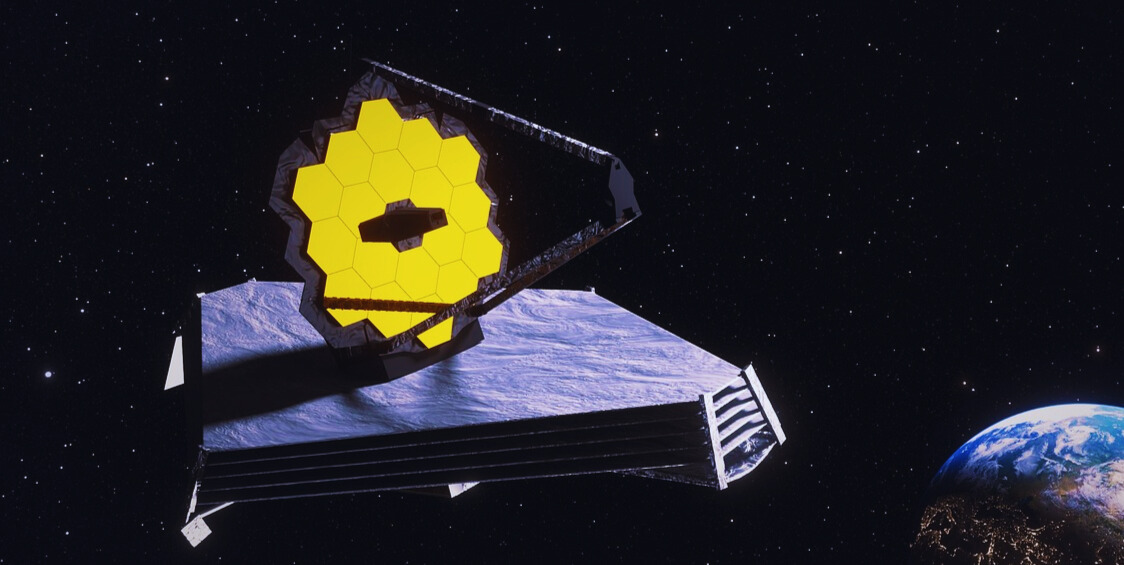For centuries, the wide expanse of space had been a seductive enigma to both astronomers and scientists as well as dreamers. We’ve been trying to peer beyond our planet’s borders and understand the mysteries of the universe, from ancient stargazers to modern day astronomers. With each technological leap, our eyes have reached farther into the celestial expanse, and now, we stand at the brink of a revolutionary era in space exploration with the advent of the James Webb Telescope.
This is a joint space project of NASA, European Space Agency (ESA) and Canadian Space Agency (CSA). The first proposal for next generation space telescope was put up in 1989, it is renamed in 2002 in honor of James E. webb who was a former administrator of NASA.
The launch was earlier dated on May 2020 but due to COVID pandemic it was shifted to March 2021, later it was successfully lunched on 25 December 2021. It was launched from launch site Centre Spatial Guyanais, ELA-3 on Ariane rocket.
THE ROUTE TO L2: THE FINAL STOP
The second Lagrange point, or L2, is a stable location in space and is the JWST’s final destination. L2, which is about 1.5 million kilometers (932,000 miles) from Earth, is in a prime location for making observations. At this point, the gravitational pulls of the Earth and the Sun are equal, enabling the telescope to keep a steady position with respect to both celestial bodies. The JWST’s observational capabilities will be improved by the Earth and Moon being protected from it at L2.
With its advanced technology, the James Webb Telescope is expected to outperform the Hubble Space Telescope in every way. It will benefit from being above Earth’s atmosphere, which may distort and block specific wavelengths of light, by being launched into space. The JWST will be able to view the universe in infrared wavelengths from this advantageous location, revealing the mysteries of cosmic dust and gas clouds.
TECHNICAL SPECIFICATIONS
The James Webb Space Telescope boasts a host of advanced technologies that enable its groundbreaking discoveries:
- Sunshield: The James Webb Telescope has a five-layered sunshield about the size of a tennis court, which keeps its instruments at extremely low temperatures, ensuring the telescope’s sensitivity in the infrared range.
- Gold-coated Mirrors: The telescope features a 6.5-meter (approximately 21 feet) primary mirror, consisting of 18 hexagonal segments coated with a thin layer of gold to enhance its reflective properties.
- Near Infrared Camera (NIRCam): This camera will be the primary imager, providing wide-field and high-resolution images in the near-infrared range.
- The Near Infrared Spectrograph (NIRSpec) will allow astronomers to conduct spectroscopy on more than 100 objects at once, greatly increasing the effectiveness of the telescope.
- Mid-Infrared Instrument (MIRI): MIRI, the coldest instrument on the James Webb Telescope, will be able to study the mid-infrared spectrum and supplement other experiments’ findings.
THE MAIN GOALS OF THE JAMES WEBB TELESCOPE ARE
- to detect light from the early stars and galaxies that were formed in the universe after the Big Bang.
- to study more about formation of the universe and galaxies.
- to understand formation of stars.
- to study formation of planets.
- to study the origin of life.
- to study dark matter and dark energy.
FREQUENTLY ASKED QUESTIONS RELATED TO JAMES WEBB TELESCOPE
Q1. Total cost to build and install James Webb Telescope in its orbit.
A1. NASA spent about $9.7 billion European Space Agency spent about 700 million Euro and Canadian Space Agency spent about CA$200 million.
Q2. Time taken to place James Webb Telescope in its orbit.
A2. It took about a month to reach its destination, which is an orbit around the sun.
Q3. What was the first picture sent to earth by James Webb Telescope.
A3. First picture sent by James Webb Telescope was of a galaxy cluster SMACS 0723, which is about 5.12 billion lightyears away from the Earth.
Q4. Where is the JWST right now?
A4. JWST is currently 1,711,056 kilometers from the earth and located at the second sun-Earth Lagrange point.




